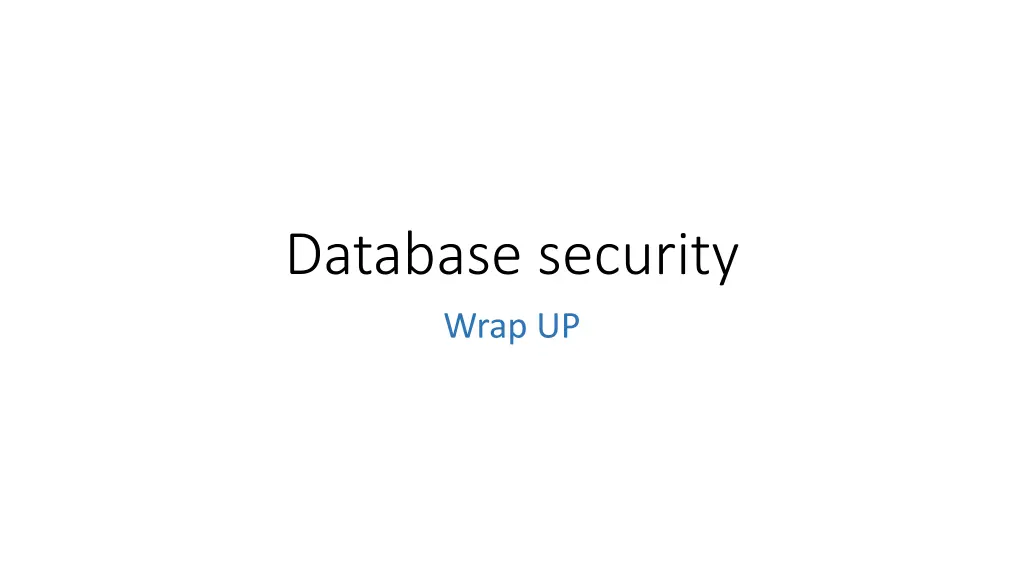
Essential Tips for Securing Your Database from Threats
Learn how to safeguard your database with a multi-layered defense strategy to prevent cyber attacks, strengthen authentication, secure data storage, protect against data loss, prevent DoS attacks, and stay compliant with regulations.
Download Presentation

Please find below an Image/Link to download the presentation.
The content on the website is provided AS IS for your information and personal use only. It may not be sold, licensed, or shared on other websites without obtaining consent from the author. If you encounter any issues during the download, it is possible that the publisher has removed the file from their server.
You are allowed to download the files provided on this website for personal or commercial use, subject to the condition that they are used lawfully. All files are the property of their respective owners.
The content on the website is provided AS IS for your information and personal use only. It may not be sold, licensed, or shared on other websites without obtaining consent from the author.
E N D
Presentation Transcript
Database security Wrap UP
How to Protect Your Database from Threats How to Protect Your Database from Threats To keep your database secure, you need a multi-layered defense strategy. Here are the best practices: 1. Prevent Cyber Attacks Use Parameterized Queries & ORM Prevent SQL Injection by avoiding direct SQL query concatenation. Deploy Web Application Firewalls (WAFs) Block suspicious requests. Regular Vulnerability Scanning Use tools like SQLmap to detect vulnerabilities. Install & Update Security Patches Keep your database software up to date.
Strengthen Authentication & Access Control Strengthen Authentication & Access Control Use Strong Passwords & Multi-Factor Authentication (MFA) Prevent unauthorized access. Role-Based Access Control (RBAC) Give users only the minimum required permissions. Monitor & Audit Logins Enable logging to track unusual access patterns.
Secure Data Storage & Encryption Secure Data Storage & Encryption Encrypt Data at Rest & In Transit Use AES-256 encryption for stored data and TLS/SSL for connections. Hash & Salt Passwords Use bcrypt or Argon2 instead of storing plaintext passwords. Regularly Back Up Data Store backups offsite and encrypt them.
Protect Against Data Loss & Corruption Protect Against Data Loss & Corruption Implement RAID & Redundant Storage Protect against hardware failure. Enable Point-in-Time Recovery Helps recover data from unintended modifications. Run Integrity Checks Use DBCC CHECKDB (SQL Server) or fsck (Linux) to detect corruption.
Prevent Denial of Service ( Prevent Denial of Service (DoS DoS) Attacks ) Attacks Rate Limit Requests Set query limits to prevent excessive loads. Use Load Balancers Distribute traffic across multiple database servers. Set Up IP Whitelisting Restrict database access to trusted IPs only.
Stay Compliant with Regulations Stay Compliant with Regulations Follow GDPR, HIPAA, or PCI-DSS Standards Depending on your industry. Regularly Audit & Review Security Policies Ensure compliance with legal requirements.






















